FREE Standardized Achievement Science Test Question and Answer
Which of the two scientific explanations for how craters are eliminated from Europa's surface is most accurate?
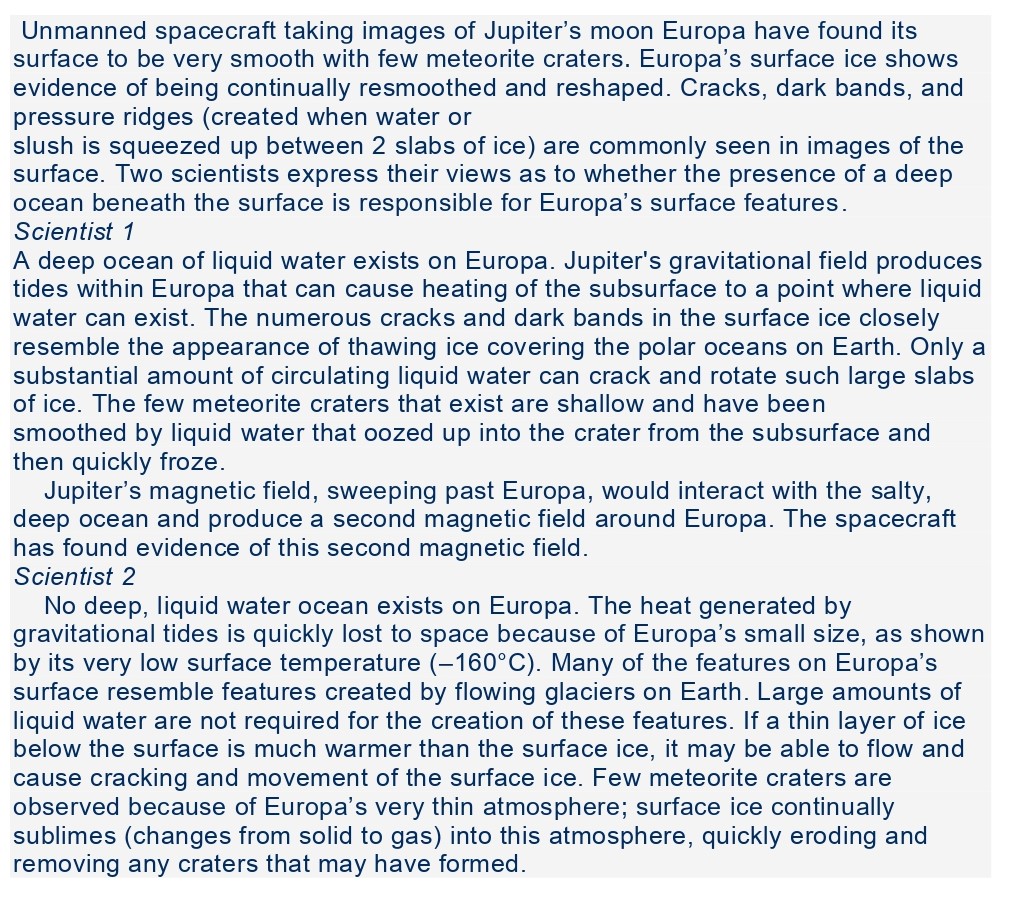
According to Scientist 1, liquid water that oozes up into the craters from the subsurface and then soon freezes smooths out the craters. According to Scientist 2, the craters are eroded and smoothed when ice sublimates.
Which of the following descriptions of Europa would be agreed upon by both scientists in light of the evidence provided?
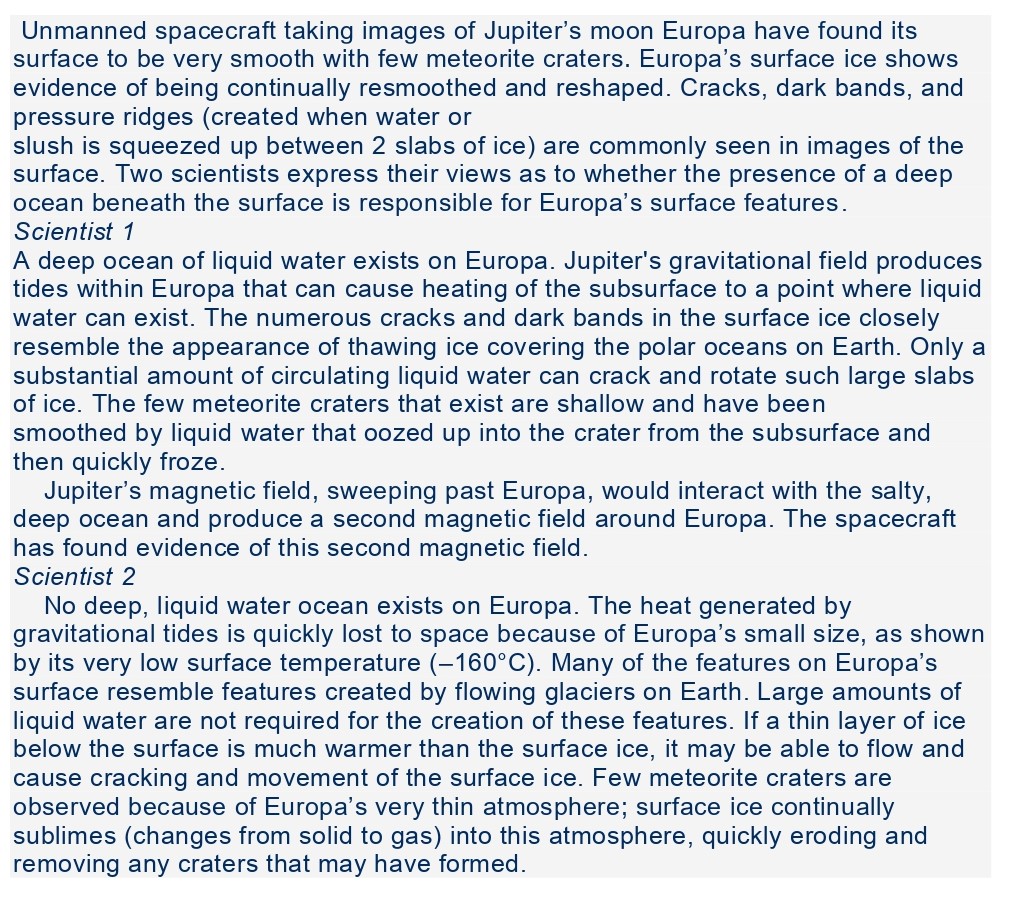
Both scientists claim that the surface is largely covered with ice, but neither mentions the existence of any other surface materials. Therefore, it is likely that both scientists would concur that a covering of ice entirely covers Europa.
Which of the following descriptions of Europa would be agreed upon by both scientists in light of the evidence provided?
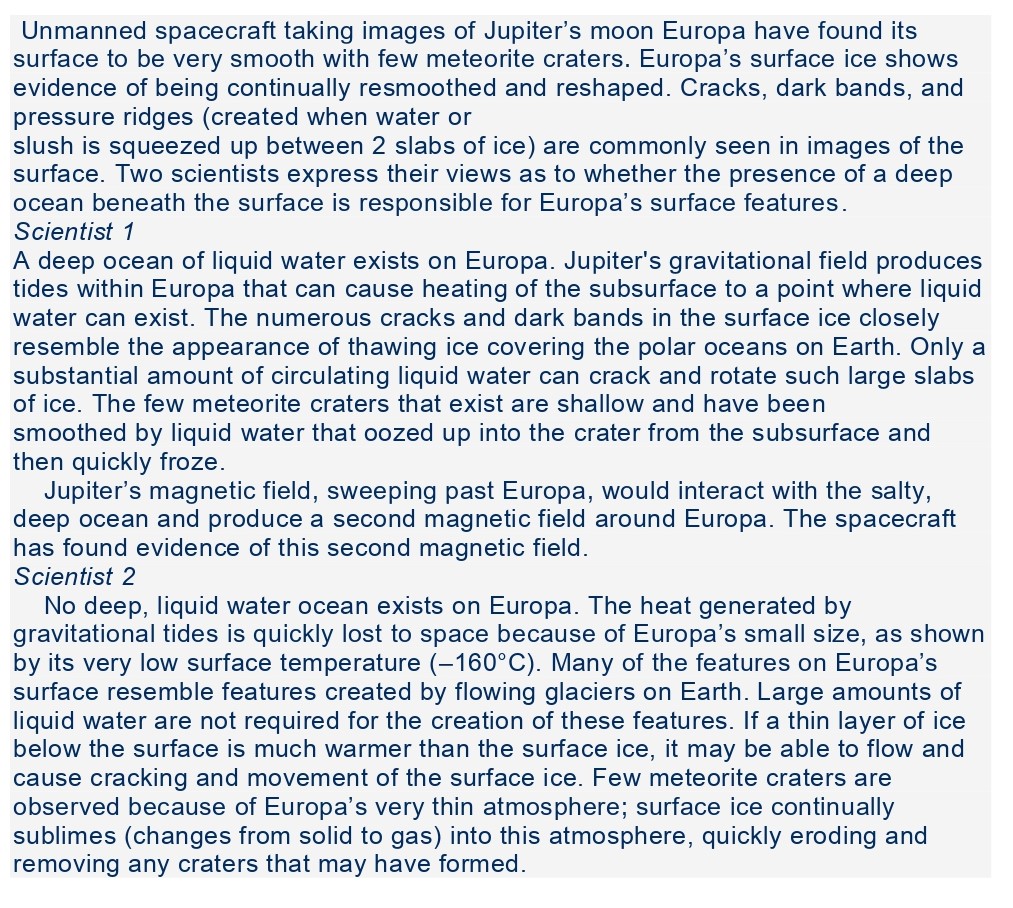
According to Scientist 1, enormous rotating ice slabs make up a portion of Europa's surface. Many of the surface characteristics on Europa, according to Scientist 2, are similar to those made by Earth's flowing glaciers. Therefore, both would probably concur that ice movement is sculpting Europa's surface.
Which of the following descriptions of the meteorite craters on Europa best reflects the opinions of both scientists?
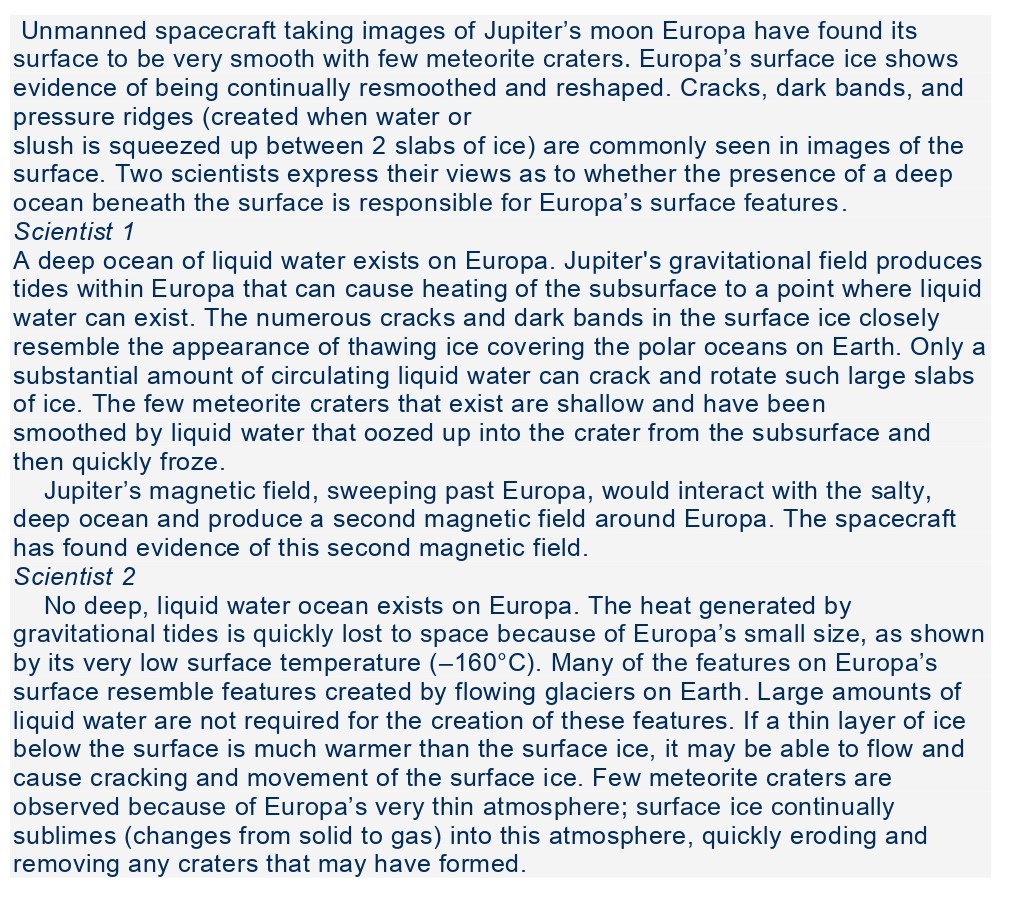
Both scientists explain how meteorite craters are removed or smoothed out on the surface. According to Scientist 1, the craters smooth out when liquid water seeps into them before immediately freezing. According to Scientist 2, the action is the result of ice being sublimated.
Ice sublimates to water vapor and enters Europa's atmosphere, according to Scientist 2. Which of the following gases would one most likely anticipate to find in Europa's atmosphere as a result of this process, if ultraviolet light then split those water vapor molecules apart?
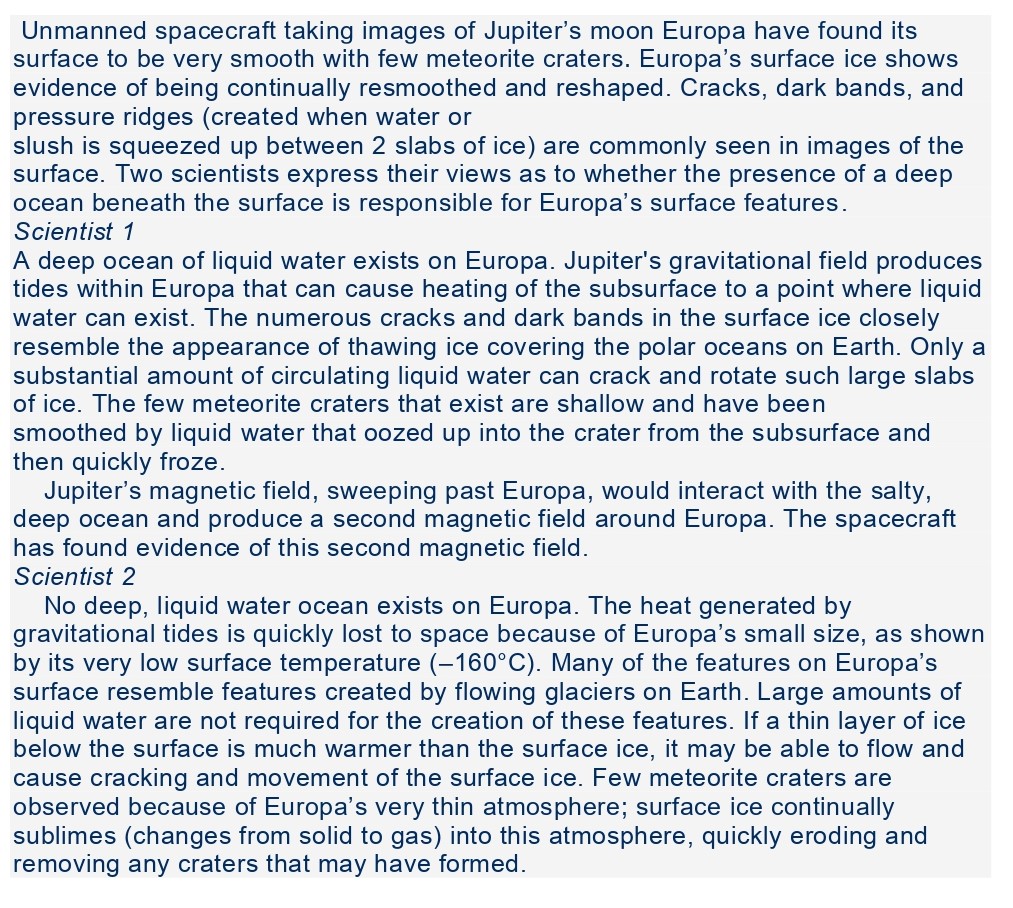
Hydrogen and oxygen are the main components of water vapor molecules. The disintegration of these molecules would result in the atmospheric generation of oxygen (O2).
Which of the following materials must be present on Europa in order for a magnetic field to be formed there, according to the information in Scientist 1's point of view?
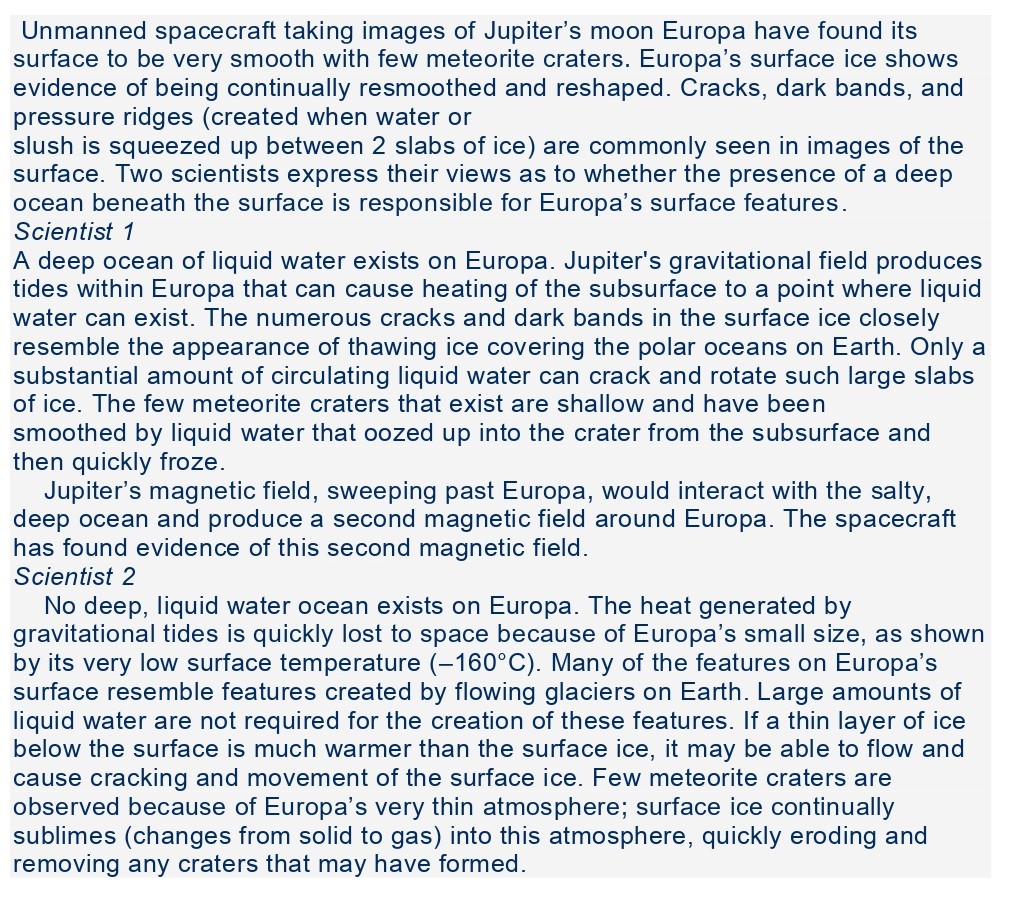
According to Scientist 1, a second magnetic field surrounds Europa and is brought on by an interaction between Jupiter's magnetic field and the salty, deep ocean. Therefore, according to Scientist 1, the presence of dissolved salts is the cause of the second magnetic field.
Assume that Scientist 2's assertion that the surface features of Europa are comparable to Earth's flowing glaciers is true. Which of the following characteristics would Earth's glaciers be least likely to display, given this presumption and the evidence presented?
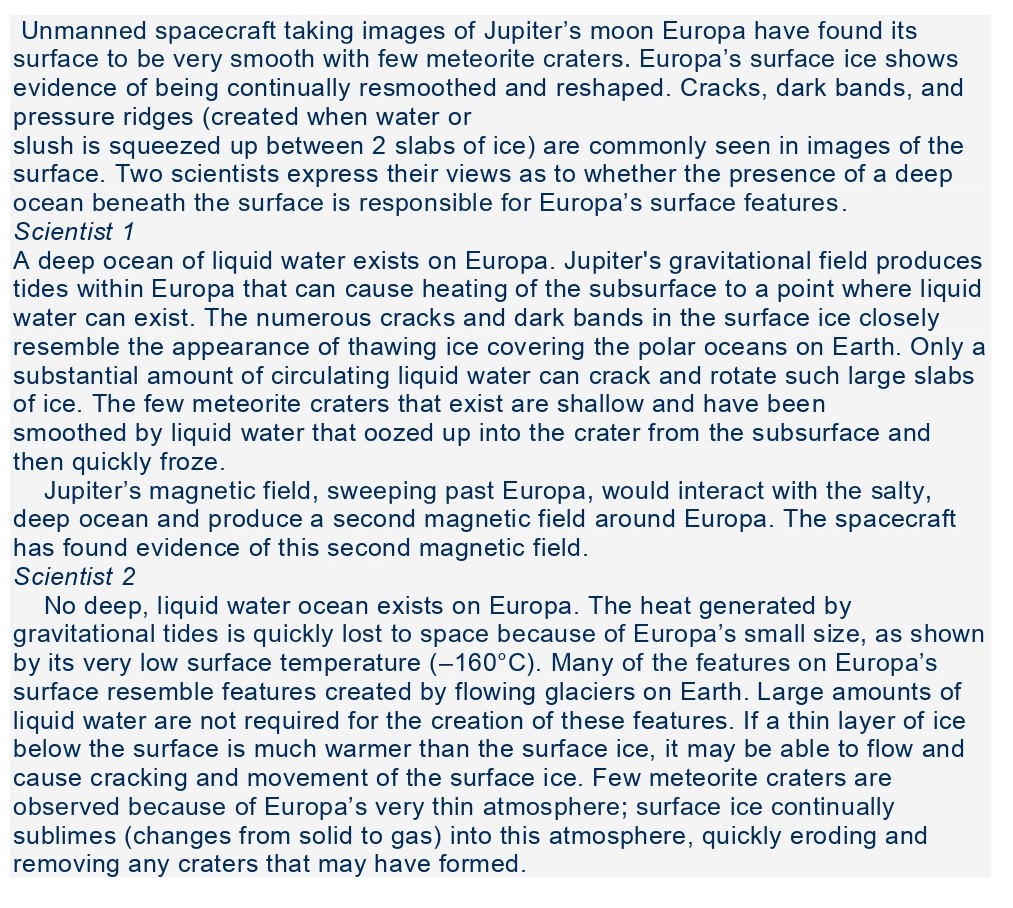
Many of the surface characteristics on Europa, according to Scientist 2, are similar to those made by Earth's flowing glaciers. These characteristics include of pressure ridges, black streaks, and cracks. So, these characteristics may be present in Earth's glaciers. Scientist 2 does not, however, suggest that glaciers on Earth might contain meteorite craters.
Which of the following statements most accurately sums up how the methods employed in Experiments 1 and 2 differ? The in Experiment 1:
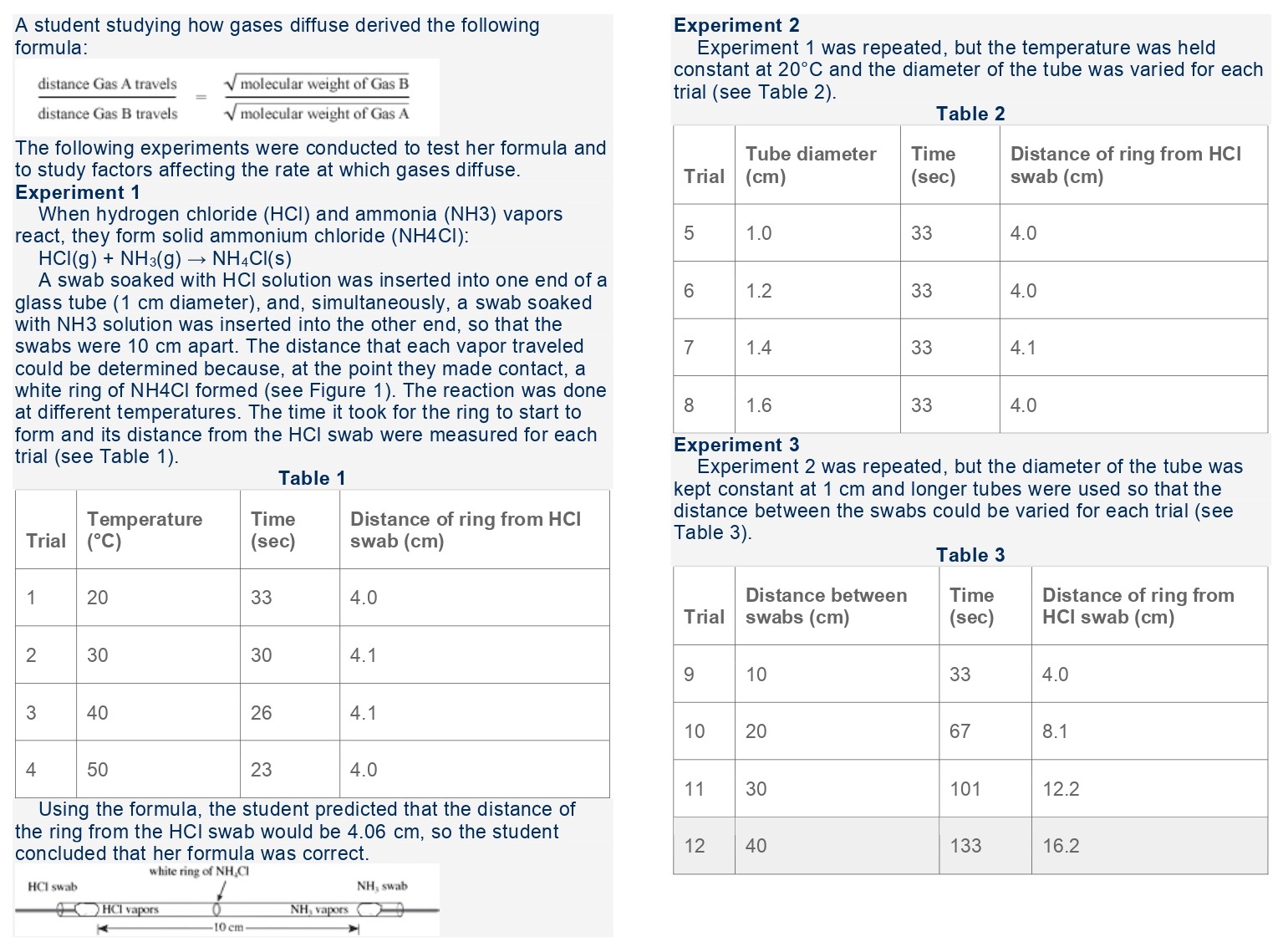
Table 1 demonstrates that in Experiment 1, four different temperatures—20°C, 30°C, 40°C, and 50°C—were used. According to Table 2, there were four distinct tube diameters utilized in Experiment 2: 1.0 cm, 1.2 cm, 1.4 cm, and 1.6 cm. So, the temperature was changed in Experiment 1. The tube diameter was changed in Experiment 2.
Which of the aforementioned trial sets from Experiments 1, 2, and 3 was carried out under the same sets of circumstances?
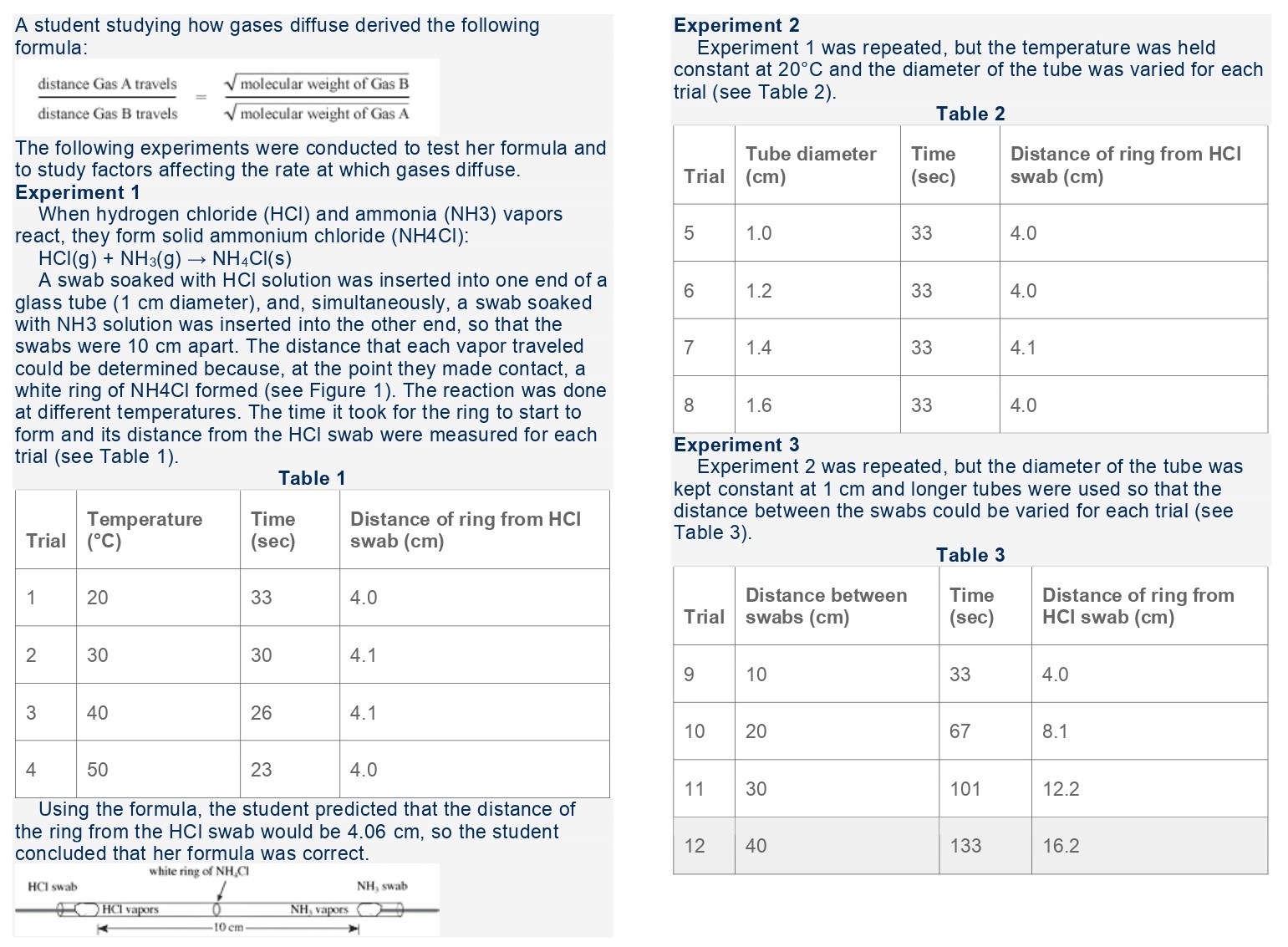
All of the experiments in Experiments 2 and 3 were conducted at 20°C. Only Trial 1 of Experiment 1 was conducted at this temperature. Trial 1 must therefore factor into the solution. The identical set of parameters were employed in Trial 5 of Experiment 2 as in Trial 1: temperature of 20°C, tube diameter of 1.0 cm, and swab distance of 10 cm. The identical set of parameters were employed in Trial 9 of Experiment 3 as in Trial 1: temperature of 20°C, tube diameter of 1.0 cm, and swab distance of 10 cm.
The HCl swab would have been the furthest from the ring in Experiment 3 if an experiment had been conducted with the swabs 25 cm apart.
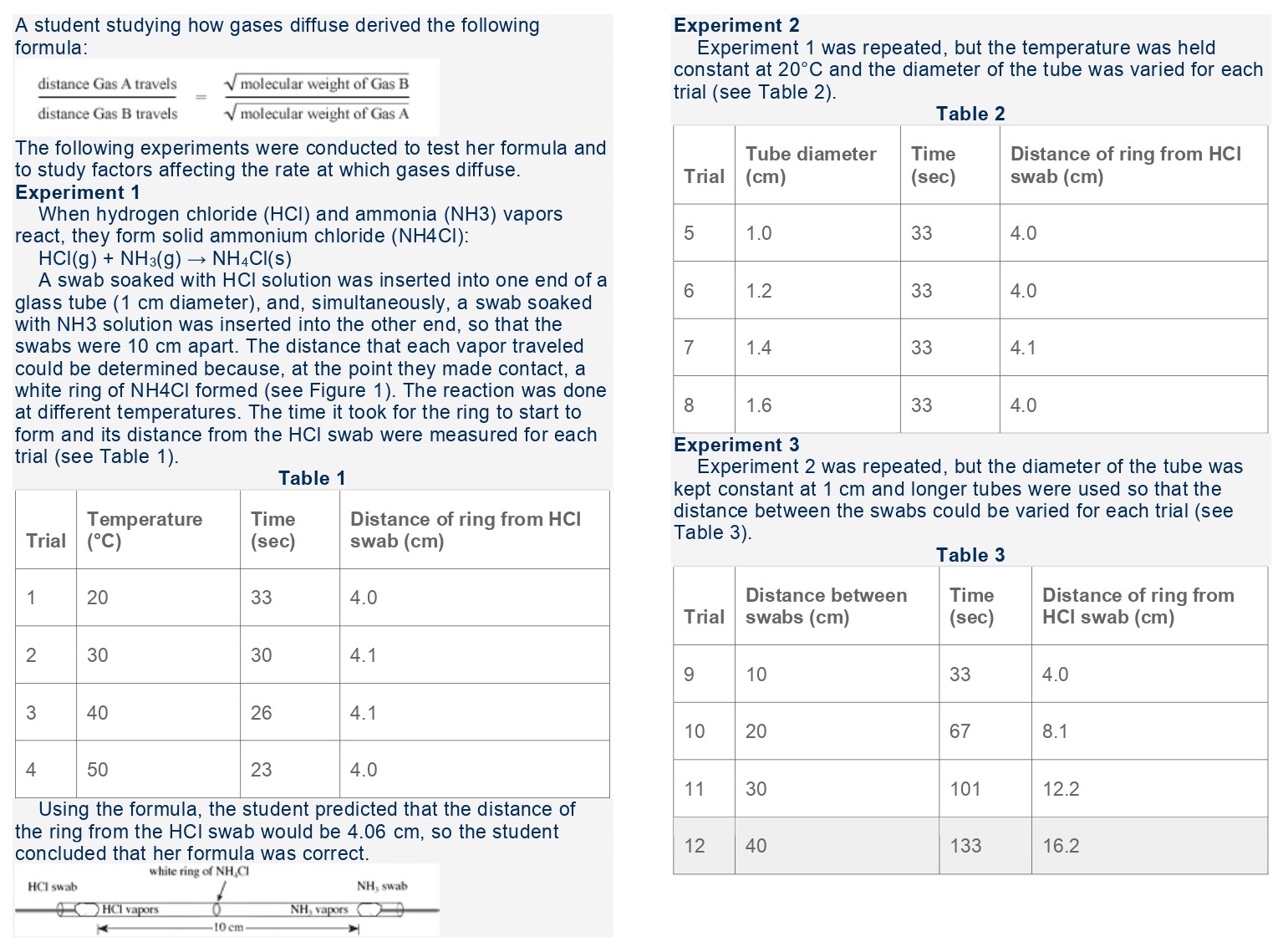
In Experiment 3, the ring's distance from the HCl swab increased as the distance between the swabs did. The ring and the HCl swab were separated by 8.1 cm when the swabs were 20 cm apart. The ring and the HCl swab were 12.2 cm apart when the swabs were 30 cm apart. The distance between the ring and the HCl swab would have been around 10 cm, or halfway between 8.1 cm and 12.2 cm, if the swabs had been 25 cm apart.
Which of the following should a different student perform if he wished to test a factor that was not examined in Experiments 1-3? He ought to investigate the following factors' effects on gas diffusion rates:
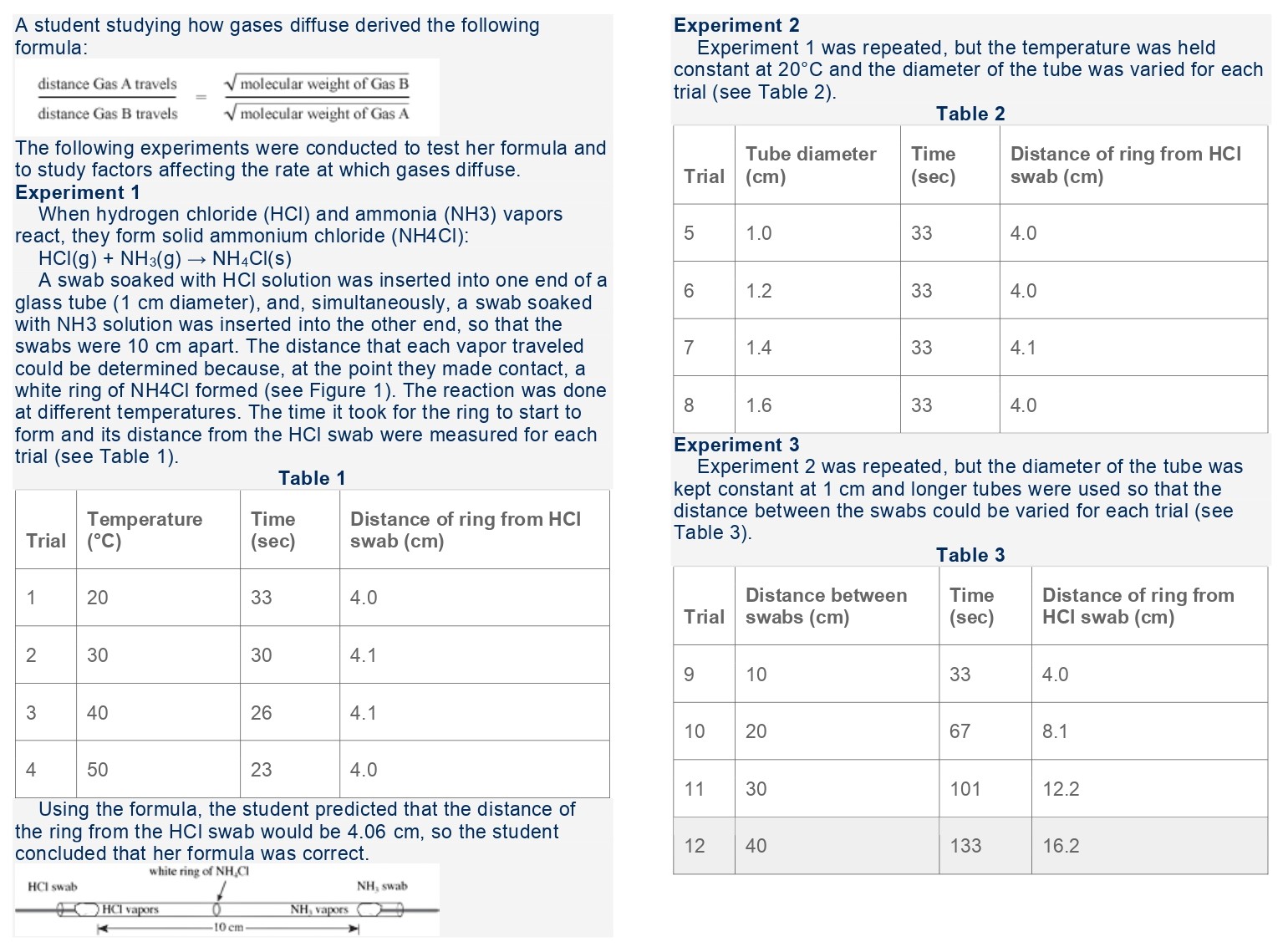
The first experiment looked at temperature. Experiment 2 examined tube diameter. Experiment 3 examined tube length. As a result, Experiments 1-3 investigated these three criteria. The three tests did not examine atmospheric pressure.
According to Study 1's general findings, peony seeds are most likely to germinate when kept at which of the following temperatures when they are placed in a petri dish with damp paper?
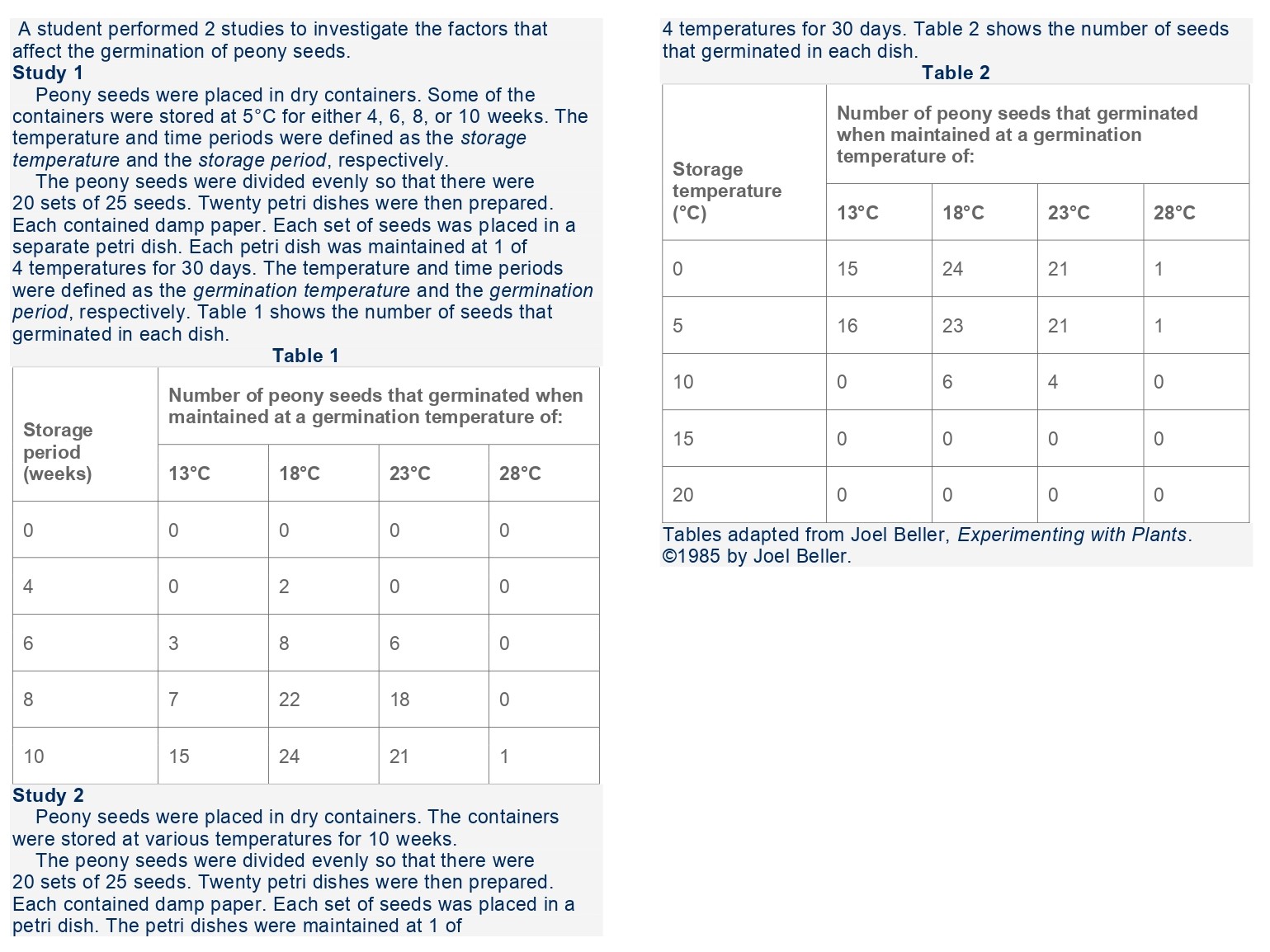
In Study 1, maintaining seeds at a germination temperature of 18°C resulted in a higher germination rate than maintaining seeds at any of the other 3 germination temperatures. Therefore, maintaining the seeds at 18°C increases their likelihood of germinating compared to maintaining them at 13°C, 23°C, or 28°C.
Imagine that Study 2 had also contained a second batch of 25 peony seeds with storage temperatures of 25°C and germination temperatures of 18°C. Considering the data available, it is most likely that the following range of seeds would have borne fruit after being kept for 30 days:
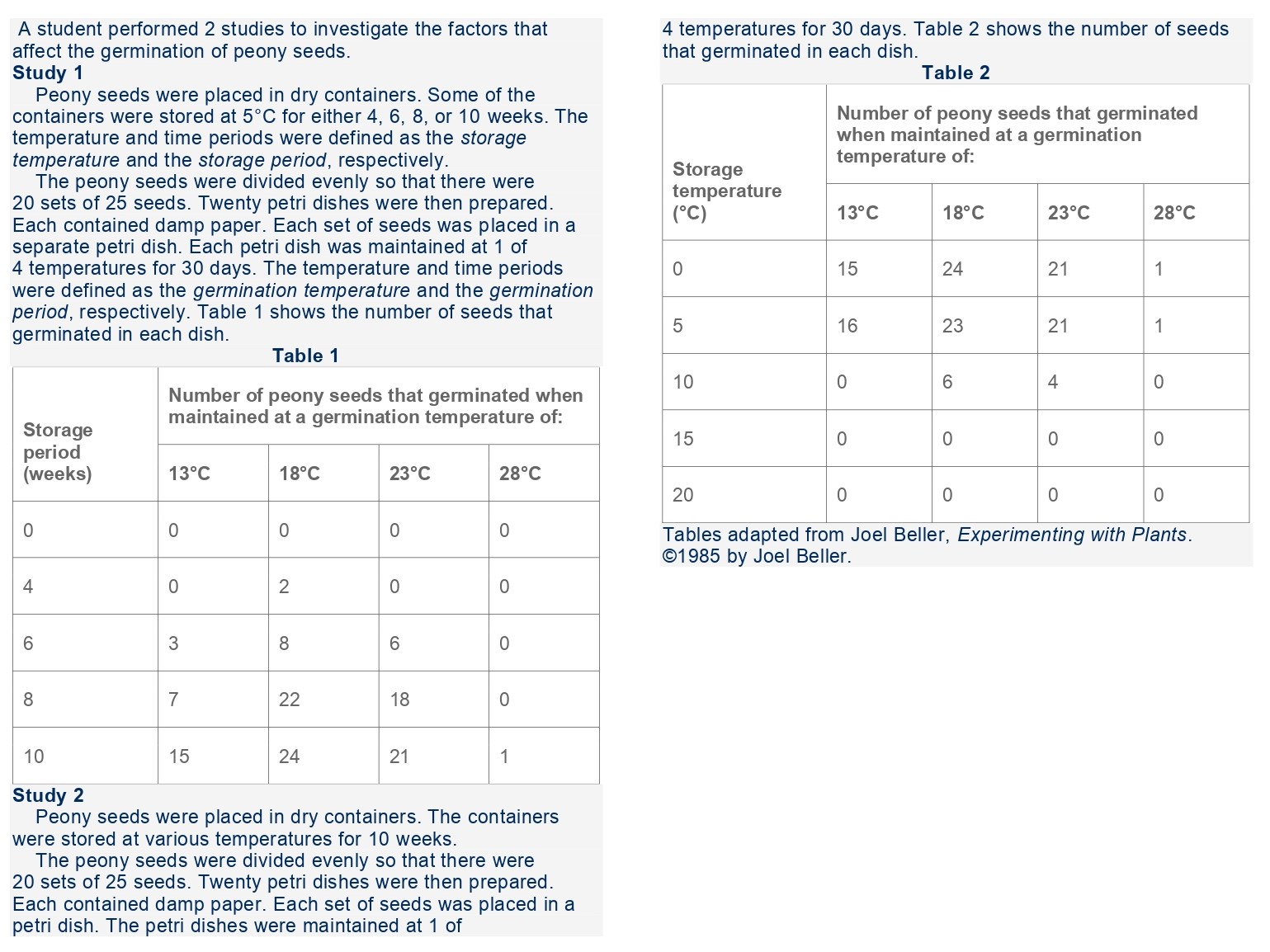
In Study 2, no seeds germinated when the storage temperature was 15°C or above. Therefore, it is more likely than not that 0 or 0 near to 0 would have represented the number of seeds that would have germinated after being kept for 30 days.
In Study 2, the number of seeds that germinated increased when the germination temperature rose from 13°C to 28°C at the storage temperature of 5°C.
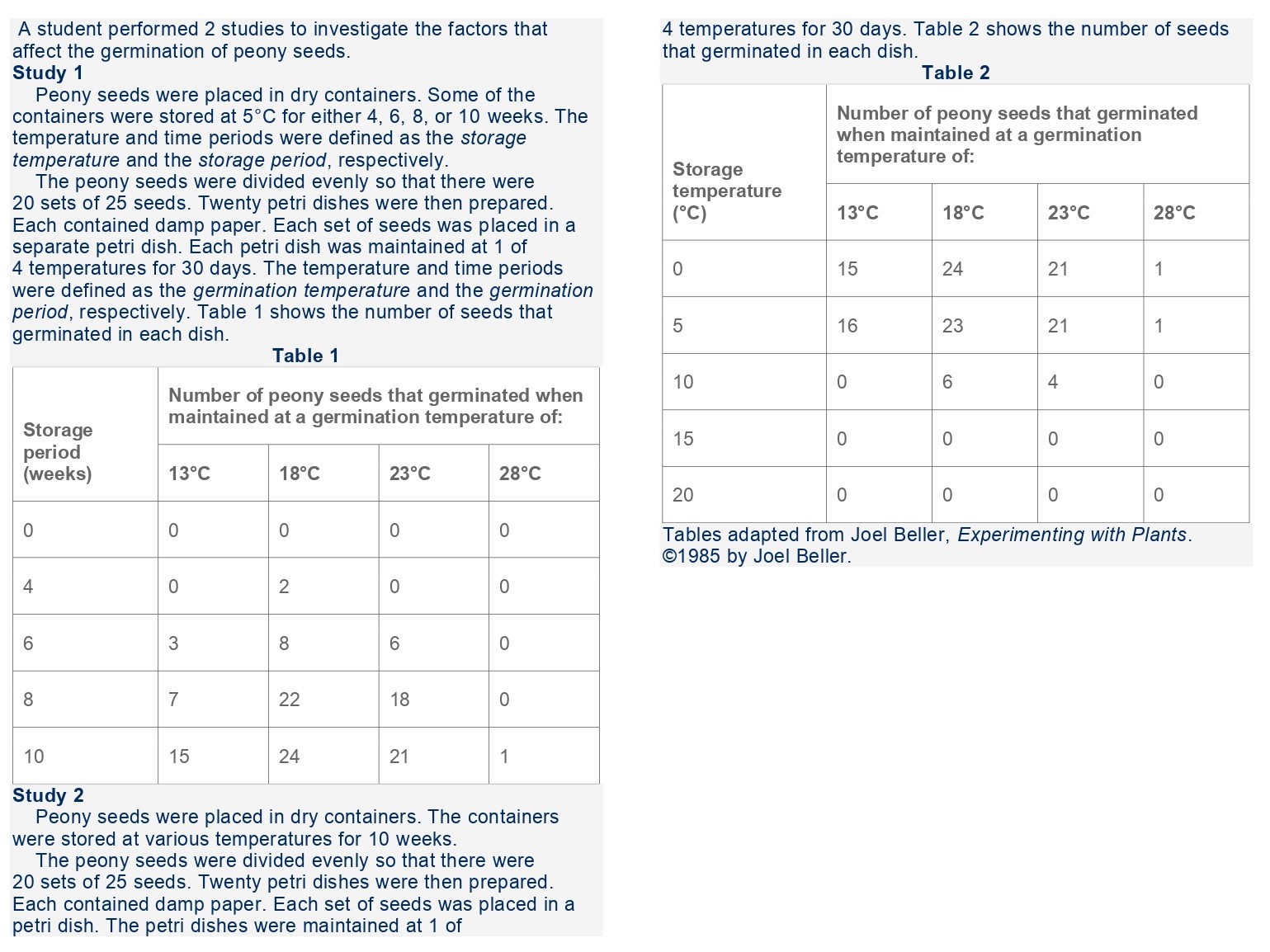
Four germination temperatures—13°C, 18°C, 23°C, and 28°C—were applied in Study 2. There were 16, 23, 21, and 1 seeds that germinated at each of these 4 temperatures, correspondingly. Therefore, the number of seeds that germinated initially increased (from 16 to 23) and subsequently declined as germination temperature increased from 13°C to 28°C (from 23 to 21 and from 21 to 1).
Which of the following collections of seeds had the same treatment before being put into the petri dishes?
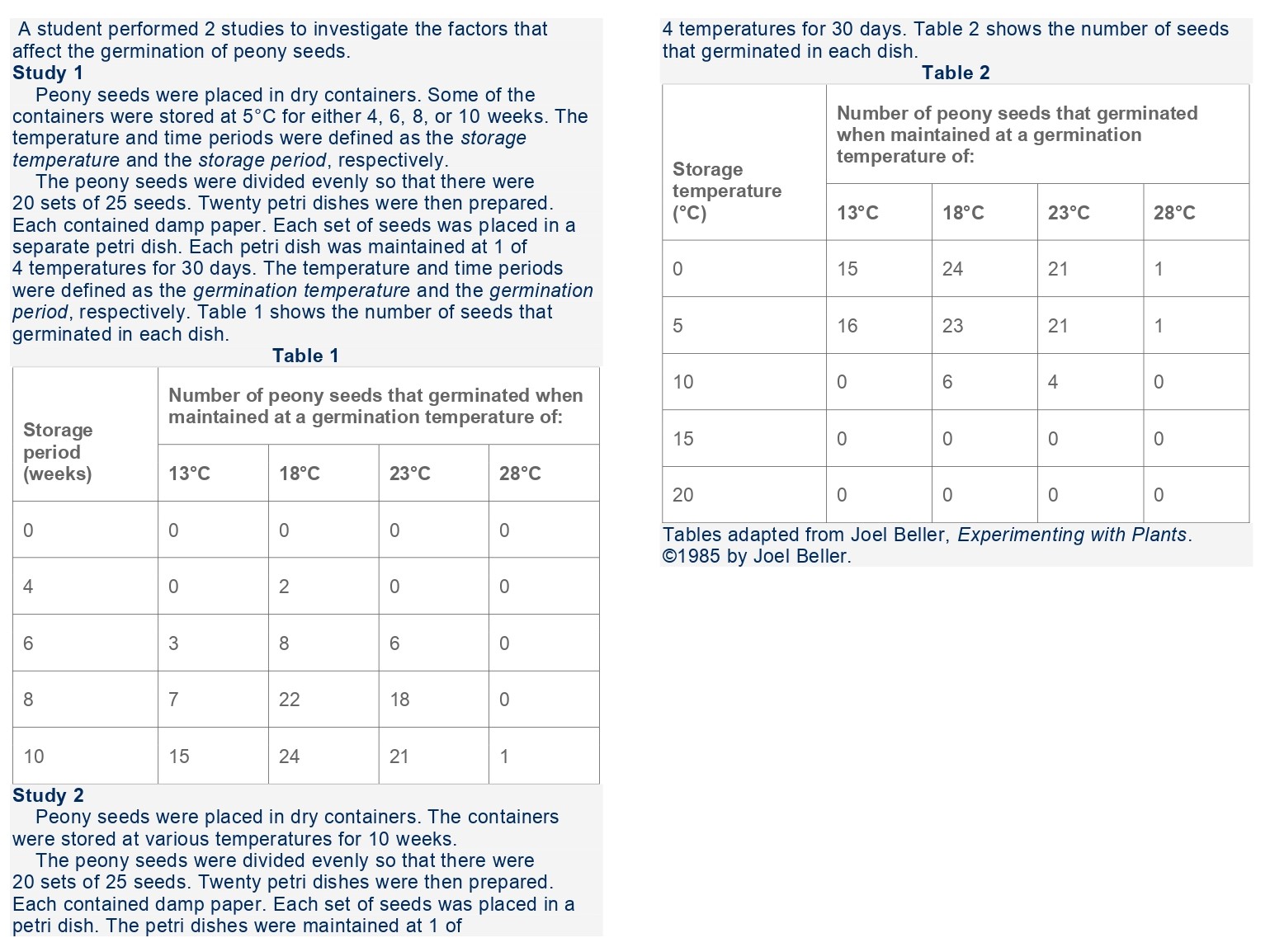
All of the seeds in Study 1 were kept in storage at 5 °C. In Study 2, every seed was kept in storage for ten weeks. The seeds must have been kept at 5°C for 10 weeks after being subjected to the same circumstances in Studies 1 and 2.
Study 2's experimental methodology changed from Study 1's in that Study 2:

Five storage periods—0, 4, 6, 8, and 10 weeks—were used in Study 1. One storage duration of 10 weeks was used in Study 2. Therefore, storage time was kept constant in Study 2. Study 1 altered the storage period.